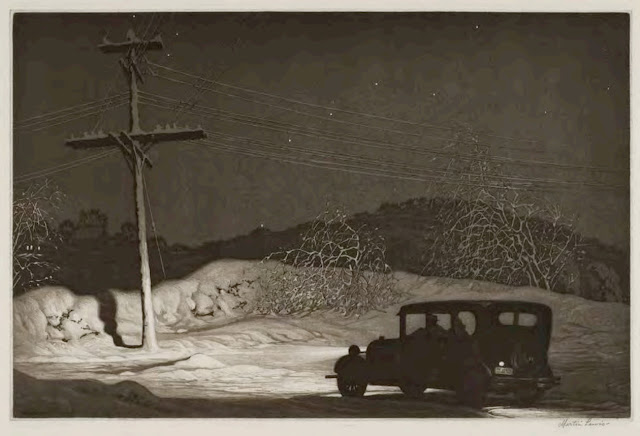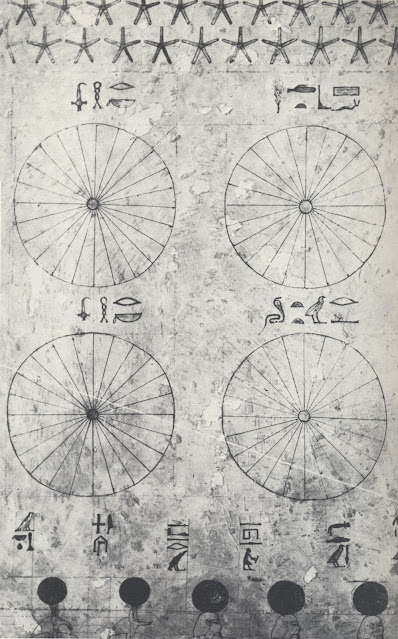What great powers reside in black and white!
 |
| Bruce Eric Kaplan |
 |
| Jeff MacNelly's view of mideast peace negotiations |
 |
| Gerard DuBois |
 |
| "Which Way?" etching by Martin Lewis: Darkness as uncertainty |
 |
| Detail, Martin Lewis |
 |
| "Who Are They?" by Saul Steinberg: Mystery emerging from blackness |
Thousands of years ago, Egyptians priests stared up at the stars and mapped their notion of the cosmos in black and white:
 |
| Astronomical ceiling in the tomb of Senenmut, Dynasty xviii, era of Hatshepsut |
Ancient Egypt was divided by the Nile river: the east side of the river, where the sun rose, was considered the side of life. The west side, where the sun set, was the side of death. The sun god Ra made his daily journey across the sky, from light to blackness, in "The Boat of Millions of Years." When Pharaohs died, they were transported across the Nile to the mausoleums and the funerary Valley of the Kings, on the side of the setting sun.
Ra proclaimed: "When I open my eyes it is light; when I close them it is dark." From this black-and-white duality, Ra earned a thousand additional names: "I am the Sole Creator, the child of the watery abyss. I am the god with a thousand names, but my secret name was only spoken once, before time began." Ra's spoken names included:
The Renewer of Earth
The Maker of Time
The Exalted One
The Wind in the Souls
The Shining One
Spark of the Fire of Life
The Giver of Festivals
Setter of the Horizons
The Maker of the Heights and the Depths
The Hidden One
All these roles are facets that arise from the richness of black and white. The ancient Egyptians understood why black and white ain't black and white, but sometimes I fear we've lost touch with that wisdom.
These days, artist friends rush to adopt the digital sculpting tool, Zbrush. This amazing software enables beginners to skip over years of training, frustration and thinking so they can make photorealistic images in a year. The tool can be used for modeling, texturing and painting. It manages the lighting, color, material, orientation, and depth for every object in a picture. Yet with all these new superpowers, some artists are afraid to be left naked and alone with black and white.
Digital tools have become so powerful it's sometimes impossible to tell who did what. Are we witnessing the genius of the artist or the genius of the software engineer? There's a sameness to the work of the software, but one can't tell for sure until the electricity goes out.
I value each of the black and white pictures in this post as a personal expression of the true artist. Here is the creativity that springs from the fertile dichotomy of black and white. The edges are a little rougher but you can tell from a mile away that you're seeing the artist, not the tool, at work.
 |
| Harold von Schmidt, Death Comes For the Archbishop |









2 comments:
MacNelly was awesome. Nobody's that good today.
Thanks for the work of Martin Lewis. I wasn't familiar with him but he's first rate.
JSL
Post a Comment